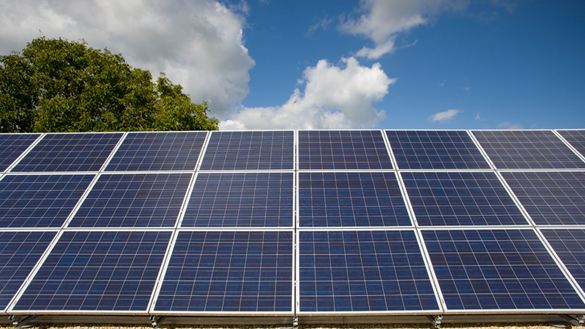
How does a wind turbine work?
Wind turbines can turn the power of wind into the electricity we all use to power our homes and businesses. They can be stand-alone, supplying just one or a very small number of homes or businesses, or they can be clustered to form part of a wind farm. Here we explain how they work and why they are important to the future of energy.
What is a wind turbine?
Wind turbines are the modern version of a windmill. Put simply, they use the power of the wind to create electricity.
Large wind turbines are the most visible, but you can also buy a small wind turbine for individual use; for example to provide power to a caravan or boat.
What is a wind farm?
Wind farms are groups of wind turbines. It’s pretty impressive to think that the electricity that powers so much in our lives – from charging our phones, to allowing us to make a cup of coffee or fuel an electric vehicle – might have started out as a simple gust of wind.
How do wind turbines work?
First let’s start with the visible parts of the wind farm that we’re all used to seeing – those towering white or pale grey turbines. Each of these turbines consists of a set of blades, a box beside them called a nacelle and a shaft. The wind – even just a gentle breeze – makes the blades spin, creating kinetic energy. The blades rotating in this way then also make the shaft in the nacelle turn and a generator in the nacelle converts this kinetic energy into electrical energy.
What happens to the wind-turbine generated electricity next?
To connect to the national grid, the electrical energy is then passed through a transformer on the site that increases the voltage to that used by the national electricity system.
It’s at this stage that the electricity usually moves onto the National Grid transmission network, ready to then be passed on so that, eventually, it can be used in homes and businesses. Alternatively, a wind farm or a single wind turbine can generate electricity that is used privately by an individual or small set of homes or businesses.

Why are wind turbines usually white or pale grey?
Wind turbines do tend to be either white or very pale grey – the idea being to make them as visually unobtrusive as possible. There is discussion about whether they should be painted other colours, particularly green, in some settings to help them blend in with their environment better.
In the United States, the Federal Aviation Administration requires that turbines be white or off-white but other jurisdictions require additional markings, typically on the ends of the blades.
How strong does the wind need to be for a wind turbine to work?
Wind turbines will generally operate between 7mph (11km/h) and 56mph (90km/h). The efficiency is usually maximised at about 18mph (29km/h) and they will reach their maximum output at 27mph (43km/h).
Where are wind farms located?
Wind farms tend to be located in the windiest places possible, to maximise the energy they can create.
Wind farms can be onshore or offshore; offshore wind farms are located out at sea, whereas onshore wind farms are located on land, usually in fields or more rural areas where buildings and obstacles don't interrupt the air flow.
Read more about the differences between onshore and offshore wind power
Where was the first wind turbine and the first wind farm?
The very first wind turbine that produced electricity was created by Professor James Blyth at his holiday home in Scotland in 1887. It was 10m high and had a sail cloth.
The world’s first wind farm opened in New Hampshire in the US in 1980.
Are wind farms bad for birds?
The fact is that climate change poses the single greatest long-term threat to birds and other wildlife. And renewable energy – of which wind turbines is a key component – is essential in reducing greenhouse gases.
The UK charity Royal Society for the Protection of Birds (RSPB) acknowledges this bigger picture, saying: “Switching to renewable energy now, rather than in 10 or 20 years, is essential if we are to stabilise greenhouse gases in the atmosphere at safe levels.”
Wind farm developers work closely with the RSPB and local environmental groups, through a consultation process on the siting of wind farms, to continue the growth in onshore and offshore wind power while balancing any potential harm to birds through habitat loss, disturbance and collision.
A US report concluded that wind power’s impact on bird populations is relatively small when compared with falling prey to cats and collisions with high rise buildings.
How much of the UK's power is generated by wind?
See how much of the UK’s power is being generated by wind via the National Grid ESO App for Google Play or Apple iOS.
Last updated: 23 Feb 2023
The information in this article is intended as a factual explainer and does not necessarily reflect National Grid's strategic direction or current business activities.



